Fantasy (DMR Books): The Ship of Ishtar was first serialized in Argosy All- Story in November 1924. It was immediately a huge hit with Argosy‘s readership. Not since the days of “The Moon Pool” had there been such a furor amongst the Argosy audience–and part of that previous buzz was due to Merritt writing his novella as if it was factual.
Story in November 1924. It was immediately a huge hit with Argosy‘s readership. Not since the days of “The Moon Pool” had there been such a furor amongst the Argosy audience–and part of that previous buzz was due to Merritt writing his novella as if it was factual.
Cinema (Mewsings): It’s been a while since the last Alien film (Alien: Covenant was 2017), surely long enough for something gestating in this hypersleeping franchise to burst forth and cause merry havoc. And now here it is, Alien: Romulus, which I went to see on a Saturday afternoon at my local cinema.
Conan (Sprague de Camp Fan): Laird Barron does his prose best to make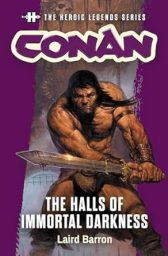 the final scenes something shudder worthy but even a fly-by-night Conan fan has read stuff like this before. Barron tries for mood by narrating that all this affects Conan in a nightmarish way. But I can’t buy it. Conan does this stuff over twice a month these days. (E-books, magazines, and comics.).
the final scenes something shudder worthy but even a fly-by-night Conan fan has read stuff like this before. Barron tries for mood by narrating that all this affects Conan in a nightmarish way. But I can’t buy it. Conan does this stuff over twice a month these days. (E-books, magazines, and comics.).
Shakespeare (Imaginative Conservative): Which brings me to my recent immersion in King Lear. What I hadn’t realized before, and which is excised from the film versions, (I recently viewed both Ian Holm’s and Anthony Hopkins’ portrayals) is the substrata of the occult in the play. We are familiar with the hags in MacBeth, but we overlook the occult dimension in King Lear.
Tolkien (Too Many Books): An article about the forthcoming Collected Poems of J.R.R. Tolkien was posted online today, in advance of print publication in the Observer tomorrow, Sunday 25 August. The Arts journalist Dalya Alberge interviewed us by phone and saw a PDF of our book. The Collected Poems is still on schedule to be published on 12 September in the U.K. and 17 September in the U.S.
Comic Books (Atomic Valley Bulletin): What are comic books, or at least, what are American comic books? In the parlance of the day of the mid- to late-1930s, a comic book was a book that contained comic strip reprints, typically the Sunday funnies of popular strips if reprint rights were available, short stories of adventure and humor, and some comic stories that were written and drawn by in-house staffers. This was obviously crafted by DC Comics just before Action Comics #1 was published, right?
Art (Silver Key): Tom Barber was working in a commercial art studio in the mid 70s when he walked into a local bookstore while on lunch break. He found a book of illustrations by N.C. Wyeth, picked it up, leafed through it.
mid 70s when he walked into a local bookstore while on lunch break. He found a book of illustrations by N.C. Wyeth, picked it up, leafed through it.
Streaming (Critical Drinker): Well, I’ve now suffered through the first three episodes of Rings of Power Season 2, so that you don’t have to. And its absolutely terrible.
Comic Strips (CBR): As Gary Larson’s The Far Side comic strip approaches its 45th anniversary in December, there is really no question as to why it’s still so popular among readers. Almost always clever, witty, and poignant, Larson has a knack for drawing attention to the absurd and making it feel relevant because, even beyond The Far Side, life itself is more often than not bordering on absurd.
Myth (Swords Lore): At last we reach perhaps the most famous story arc from Cú Chulainn’s saga in this adaptation of his life—Táin Bó Cúailnge (“The Cattle Raid of Cooley”). Although the version of events taking place in Hound are heavily truncated from the source material, I decided to split this installment of the scholarly
Pulp (Davy Crockett’s Almanac): What the Spider and his guest-star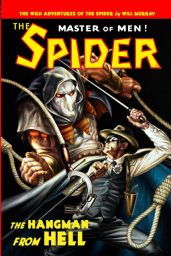 Operator #5 don’t know—but we do—is that no matter how hard they fight to stop the Invasion (and they fight very hard), it’s coming at the U.S.A. like a juggernaut, and once it begins the Purple Empire (a thinly disguised Germany) marches across country taking untold millions in casualties.
Operator #5 don’t know—but we do—is that no matter how hard they fight to stop the Invasion (and they fight very hard), it’s coming at the U.S.A. like a juggernaut, and once it begins the Purple Empire (a thinly disguised Germany) marches across country taking untold millions in casualties.
Myth (Balladeer’s Blog): This kicks off a multi-part look at the various works in Ireland’s Lebor na hUidre, The Book of the Dun Cow.
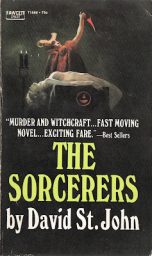 Fiction (Book Graveyard): David St John is one of the many pseudonyms of E Howard Hunt. Others are; Robert Dietrich, Gordon Davis, and P.S. Donoghue. Hunt was a CIA operative from 1949 to 1970. In World War 2 he was in China as a spy working for the Office of Strategic Services (OSS) which was basically the CIA before it existed.
Fiction (Book Graveyard): David St John is one of the many pseudonyms of E Howard Hunt. Others are; Robert Dietrich, Gordon Davis, and P.S. Donoghue. Hunt was a CIA operative from 1949 to 1970. In World War 2 he was in China as a spy working for the Office of Strategic Services (OSS) which was basically the CIA before it existed.
Myth (Axis Mundi): n Hellenic cosmology we basically speak of two Floods: one perhaps more archaic, the Flood ogigio; and perhaps a more recent one, that of Deucalion and Pyrrhus. Plato also tells of Atlantean flood, which has parallels in the tales of the Mexican Aztecs, the Costa Rican Maya and the Peruvian Incas. Indeed, the Amerindian traditions more explicitly they place a Flood at the end of each cyclical Era.
Comic Books (Fear in Four Colors): Released by Fantagraphics back on July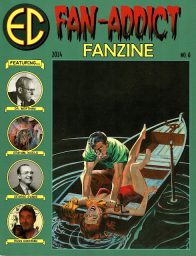 16 is this, the sixth issue of Roger Hill and Grant Geissman’s EC FAN-ADDICT FANZINE that began in 2004. Sadly, Mr. Hill passed away last December, but his legacy will live on in the books that he wrote and his contributions to this ‘zine, where he added many items from his personal collection to share with EC fans everywhere.
16 is this, the sixth issue of Roger Hill and Grant Geissman’s EC FAN-ADDICT FANZINE that began in 2004. Sadly, Mr. Hill passed away last December, but his legacy will live on in the books that he wrote and his contributions to this ‘zine, where he added many items from his personal collection to share with EC fans everywhere.
Science Fiction (Poul Anderson Contributor Articles): I agree that Mr. Stirling’s Draka books are dystopian alternate history science fiction, based on the premise of everything turning out as badly as possible. BUT, what if, unbeknownst to Stirling, he had also been influenced in shaping the basic premises of the Draka stories by Poul Anderson’s Technic Civilization stories?
Comic Books (Rip Jagger Dojo): Dynamite Comics and I have an imperfect relationship. They insist on acquiring and publishing comics I find interesting, and I sometimes buy them. The one constant is that I am almost invariably unsatisfied. So is the case with The Six Million Dollar Man Season Six.
Science Fiction (Fantasy Literature): A recent perusal of Clifford D. Simak’s wonderful collection All the Traps of Earth (from 1962) served to remind this reader of how very excellent the beloved Wisconsin-born novelist could be with the shorter form, and I resolved to read more of his stories in the near future. Thus, when I spotted a rather beat-up copy of his collection The Worlds of Clifford Simak
Science Fiction (Por Por Books): In August 2023 I wrote up a post about my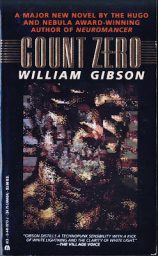 top 10 science fiction novels of the Seventies. None of my readers reacted violently to my list; indeed, some found the selections to have merit (!?). So, here I am with my top 10 science fiction novels of the Eighties.
top 10 science fiction novels of the Seventies. None of my readers reacted violently to my list; indeed, some found the selections to have merit (!?). So, here I am with my top 10 science fiction novels of the Eighties.
H. P. Lovecraft (Grognardia): I was given a copy of Free League’s oversized edition of H.P. Lovecraft’s “The Dunwich Horror,” illustrated by François Barranger. It’s an absolutely gorgeous book that pairs HPL’s text with Barranger’s moody, evocative artwork. The back of the book includes “A Note about H.P. Lovecraft,” which reads: There has long been an ongoing debate about Lovecraft’s world view and prejudices.
Horror (Wormwoodiana): The first section, “Fiction”, contains nine stories,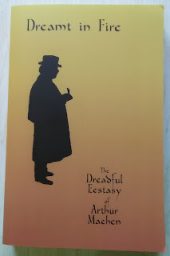 plus the whole of the slim 1924 collection Ornaments in Jade. It begins with “The Inmost Light” (1894) and ends, chronologically speaking, with “Change” and “N” (both 1936). The second section comprises ten essays, ranging from “Cidermass” (1889) through “A Note on Poetry” (1943).
plus the whole of the slim 1924 collection Ornaments in Jade. It begins with “The Inmost Light” (1894) and ends, chronologically speaking, with “Change” and “N” (both 1936). The second section comprises ten essays, ranging from “Cidermass” (1889) through “A Note on Poetry” (1943).
Clark Ashton Smith (DMR Books): The cosmic wheels have whirled and turned once more. We yet again find ourselves celebrating Klarkash-Ton Day. Its origins can be found in this previous post. I missed posting about the anniversary of Clark Ashton Smith’s death earlier this month. Let this now be a time of bacchanal and festivity.
Comic Books (Super Hero Hype): Robert E. Howard is best known as the father of sword and sorcery and the creator of Conan the Barbarian. Despite this, Howard wrote in a number of genres and created many beloved characters. Many of them figure into Battle of the Black Stone #1, which is both a crossover and a continuation of the current Conan comic. It is also an excellent introduction to the writings of Robert E. Howard outside of his fantasy tales.
H. P. Lovecraft (Egregoric Times): Another story from this early period that seems especially foundational is Lovecraft’s 1919 “case study” of extraterrestrial possession, “Beyond the Wall of Sleep”. The story is unique among Lovecraft’s works for showing, through the protagonist and narrator, an uncharacteristic level of compassion and affection for the hapless victim, Joe Slater.
Horror (Paperback Warrior): I’ve been reading a lot of Edward D. Hoch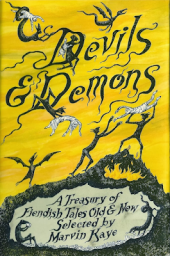 stories recently and wanted to try a stand-alone short by the writer. I found his story “The Maze and the Monster” included in this issue. The story is also included in an anthology collecting 52 shorts called Devils and Demons, edited by Marvin Kaye and published by Doubleday in 1987.
stories recently and wanted to try a stand-alone short by the writer. I found his story “The Maze and the Monster” included in this issue. The story is also included in an anthology collecting 52 shorts called Devils and Demons, edited by Marvin Kaye and published by Doubleday in 1987.
D&D (Grognardia): One of my most popular posts is “The Ages of D&D,” which I wrote more than fifteen(!) years ago, on January 11, 2009. In it, I attempted to sort the history of Dungeons & Dragons into a series of “ages” – Golden, Silver, Bronze, etc. I was still fairly new to the blogging game when I wrote that post and, while I largely stand behind its conclusions, I now concede that I relied more on hazy memories and intuitions than on anything approaching “research.”
Science Fiction (City-Journal): In 1909, Edward Morgan Forster published a story, “The Machine Stops,” which now seems astonishingly prescient. One does not normally associate E. M. Forster with science fiction: he is considered more a chronicler of the etiolated emotional life of the English upper-middle classes of the Edwardian era.
Thanks very much for the boost!